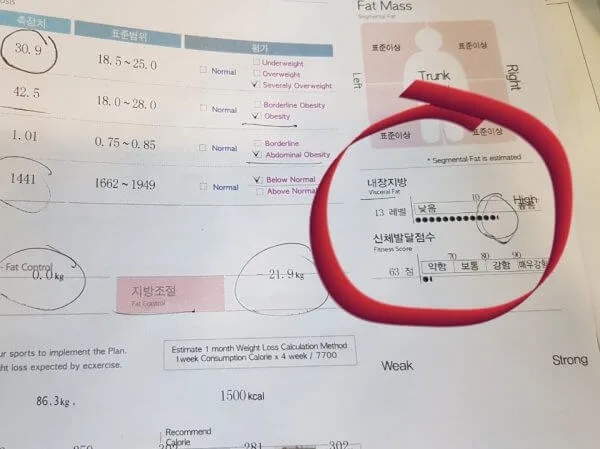内臓肥満の謎を解き明かす:なぜ手術だけでは不十分なのか
内臓肥満は、中枢性肥満とも呼ばれ、肝臓、膵臓、腸などの重要な内臓を取り巻く腹腔内に脂肪が蓄積する状態です。このタイプの脂肪は、皮膚のすぐ下にある皮下脂肪とは異なります。皮下脂肪は脂肪吸引やタミータックなどの処置で標的にすることができますが、内臓脂肪は体の深部にあり、外科的に除去することはできません(SpringerLink)。

なぜ内臓肥満は危険なのですか?
Visceral fat isn’t just a passive layer of storage. It’s metabolically active and releases hormones and chemicals that can interfere with your body’s normal functions. High levels of visceral fat are linked to an increased risk of serious health problems, such as:
- Heart Disease: Visceral fat contributes to inflammation and can lead to the buildup of plaque in your arteries, increasing the risk of heart attack and stroke (SpringerLink).
- Type 2 Diabetes: It’s associated with insulin resistance, making it harder for your body to regulate blood sugar levels.
- High Blood Pressure: Excess visceral fat puts more strain on your cardiovascular system, raising blood pressure.
- Fatty Liver Disease: The fat surrounding the liver can lead to its dysfunction and even liver scarring (cirrhosis) over time.
なぜ手術は内臓脂肪を取り除くことができないのですか?
脂肪吸引やタミータックなどの施術は、皮膚のすぐ下にある皮下脂肪を除去するように設計されています。しかし、内臓脂肪は腹腔の奥深く、重要な臓器の周りに蓄えられているため、手術ではアクセスできません。さらに、いくつかの研究では、脂肪吸引が定期的な身体活動と組み合わせない場合、内臓脂肪の代償的な増加につながる可能性があることが示唆されています(オックスフォードアカデミック)。
肥満に対処するための脂肪吸引とタミータックの役割
While it’s true that liposuction or tummy tuck cannot eliminate visceral fat, they can still play an important role for patients struggling with obesity. People with severe visceral obesity often have a low basal metabolic rate and may find it difficult to achieve significant results from diet and exercise alone. In fact, studies suggest that the success rate for weight loss through lifestyle changes is less than 8% for individuals with obesity.
By removing external fat through procedures like liposuction or tummy tuck, patients can experience a dramatic improvement in their appearance, which can serve as a powerful motivation to adopt healthier habits. This renewed sense of motivation often increases the likelihood of overcoming obesity and maintaining long-term weight management.
内臓肥満があるかどうかはどうやって見分けることができますか?
Unlike subcutaneous fat, visceral fat isn’t visible from the outside. However, a large waistline can be an indicator. For most people, a waist circumference of more than 35 inches (88 cm) for women and 40 inches (102 cm) for men suggests an unhealthy amount of visceral fat. Body mass index (BMI) can also provide a clue, but it doesn’t distinguish between fat types.
The most accurate way to measure visceral fat is through imaging techniques like CT scans or MRI, but these aren’t commonly used due to their cost and complexity. Instead, doctors may assess risk factors like waist-to-hip ratio and overall lifestyle.
内臓肥満の原因は何ですか?
Several factors contribute to the buildup of visceral fat:
- Unhealthy Diet: High consumption of sugary, processed foods and trans fats.
- Lack of Exercise: Sedentary lifestyles make it harder to burn calories and fat.
- Stress: High stress levels can lead to hormonal imbalances, particularly increased cortisol, which promotes fat storage in the abdominal area.
- Genetics: Some people are predisposed to store fat in the abdominal region.
- Aging: As we age, our metabolism slows down, and hormonal changes can lead to fat redistribution.

どうすれば内臓脂肪を減らすことができますか?
The good news is that visceral fat responds well to lifestyle changes. Here are some effective strategies:
- Healthy Eating: Focus on a balanced diet rich in fruits, vegetables, lean proteins, whole grains, and healthy fats. Avoid added sugars, refined carbs, and processed foods.
- Regular Exercise: Aim for at least 150 minutes of moderate aerobic activity or 75 minutes of vigorous exercise per week, combined with strength training.
- Stress Management: Practice relaxation techniques such as meditation, yoga, or deep breathing exercises.
- Adequate Sleep: Poor sleep can disrupt hormones that regulate appetite and fat storage. Aim for 7-9 hours of quality sleep each night.
- Limit Alcohol Consumption: Excess alcohol intake can contribute to weight gain, particularly around the abdomen.
内臓肥満に対処するための医療オプション
While lifestyle changes are the foundation for reducing visceral fat, additional medical interventions may be necessary for some individuals. Options include:
- Medications and Injections: Prescription medications or injectable treatments like GLP-1 medications have shown effectiveness in reducing visceral adipose tissue (PLOS ONE).
- Behavioral Therapy: Addressing emotional and psychological factors through counseling or therapy can help individuals overcome barriers to weight loss.
- Bariatric Surgery: For those with severe obesity and associated health risks, bariatric surgery, such as gastric bypass or sleeve gastrectomy, may be considered as a last resort to achieve significant weight reduction.

Key Takeaway for Patients Considering Liposuction or Tummy Tuck
脂肪吸引やタミータックなどの施術は、皮下脂肪を除去して体を形を整えるのに非常に効果的ですが、内臓脂肪には対処しません。ただし、これらの手順は、肥満を克服するための有意義なステップになる可能性があります。従来の減量方法ではモチベーションが低い、または成功が限られている患者にとって、手術の目に見える結果は、より健康的な習慣を取り入れるために必要な励ましを提供することができます。外科的処置と持続可能なライフスタイルの変更、そして必要に応じて医療を組み合わせることで、審美的な改善と長期的な健康上の利益の両方につながる可能性があります。


Leave A Comment
You must be logged in to post a comment.